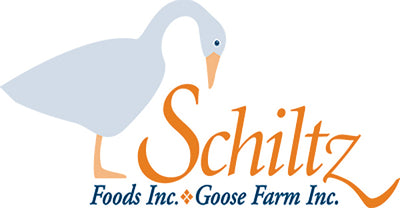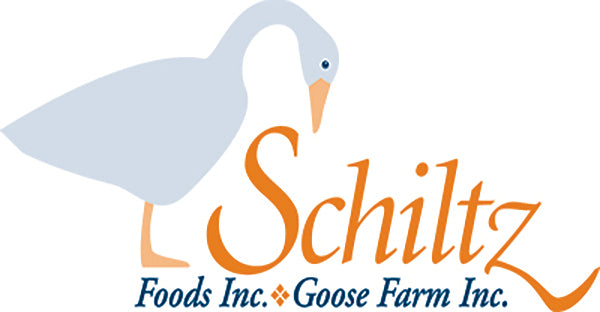Raising Standards
Where it Began
In 1944, Schiltz matriarch, Kathryn, found five goose eggs and gave
them to her husband Marlin. He hatched two goslings and grew them
to 12 lbs., selling them for 12¢ a pound. That started the Schiltz family
in the goose business. In the late 1950’s, Marlin teamed with two
renowned poultry geneticists to develop superior breeds of geese for
what we know as a traditional Christmas Goose.
Marlin grew up during the Great Depression, so continually striving
to make a better product has been passed to each generation and is
ever-present. Our geese are raised and processed with the utmost care,
so the end-product is a holiday centerpiece or savory dish created with
goose that our customers can be proud of.


Marlin Schiltz
Raising Em’ Right
Each year in January, breeders that are selected and kept for the next
year are moved to their permanent residence at our farm in North
Dakota, where they have pens in buildings with large outside lots. Each
goose has approximately 7 sq. ft. of inside space and around 120 sq. ft. of
outside space. Our geese are happy to come and go inside and outside
as often as they wish, day and night.
In March, the geese begin laying eggs in the buildings where their
feed and water are provided. When they begin nesting, we provide the
materials for them and they build their own nests. The geese enjoy
building the nests and are very particular about where and how they
want them arranged. Nest building is quite an activity to watch, as
they’re very intricate in how their perfect nest should be built.
Once eggs are laid, our employees gather them in baskets lined with
bubble pack to protect the shells and a warm cloth to keep them from
getting unduly chilled. The eggs are then washed, disinfected and
placed in a temperature and humidity controlled environment to await
incubation. Every other day, the eggs are transported to South Dakota
in a temperature controlled van, and are put into incubators within 10
days of being laid, which gives them the best chance of hatching. After
27 days they’re transferred to a hatcher (higher humidity and different
trays) where they will hatch after 4 more days (31 days total).
Once hatched, the goslings are placed in a van and taken to their new
home on a farm two miles away. Their new home is an insulated barn
with feed, water and grit (grit is needed by the gizzard for grinding
the feed to the goslings’ desired texture). The barn is kept at
a temperature where the goslings are comfortable and happy
(WARM!).
The goslings stay indoors for the first 12 days, as weather changes
in South Dakota can be quite severe., and it’s difficult to move them
inside if a storm approaches quickly. On approximately their 12th
day of life, if it is not raining, they are provided an area outside of
around the same size as their inside space. On approximately the
25th day, the goslings are given a much larger outside area and the
choice of being inside or outside on pretty much any day. There
is feed and water both inside and outside so the goslings can be
wherever they wish. Each morning, we gently herd them all outside
(unless it’s raining) to ensure they get some fresh air and sunshine.
If the day gets too warm, we open the doors so they can again have
the choice of inside or outside. We also start giving them fresh cut
alfalfa greens at this age.
By the time the goslings are eight weeks old, they have become
young geese. At this point, they have all their feathers and can
handle any summertime weather (without full feather cover they
can get sunstroke, sunburned or become dehydrated). At this time
they are moved to large open ranges which allow them approx. 120
sq. ft. per bird. These pens are planted in greens each year for the
geese and in addition we bring daily cut greens (usually alfalfa) for
the geese to eat as well as corn based feed.
Throughout their life on the farm, the geese receive feed that is
prepared with the help of a professional nutritionist. He ensures
that all feed is appropriate for the geese during the different stages
of their lives. Dietary changes are made as the birds’ nutritional
needs evolve. The diet consists mainly of corn and soybeans mixed
with vitamins and minerals along with the greens they enjoy so
much.
While the young geese are on range, the potential breeders are
separated and evaluated to see if they posses the attributes that will
improve the overall quality of the flock. If they do, they eventually
will be kept with the older breeders, who spend the summer doing
goose things in a large pasture with many trees.
At approximately 18-20 weeks of age the birds going to market are
gently herded into a livestock trailer and brought two miles, where
they walk off the trailer and into the processing facility.


